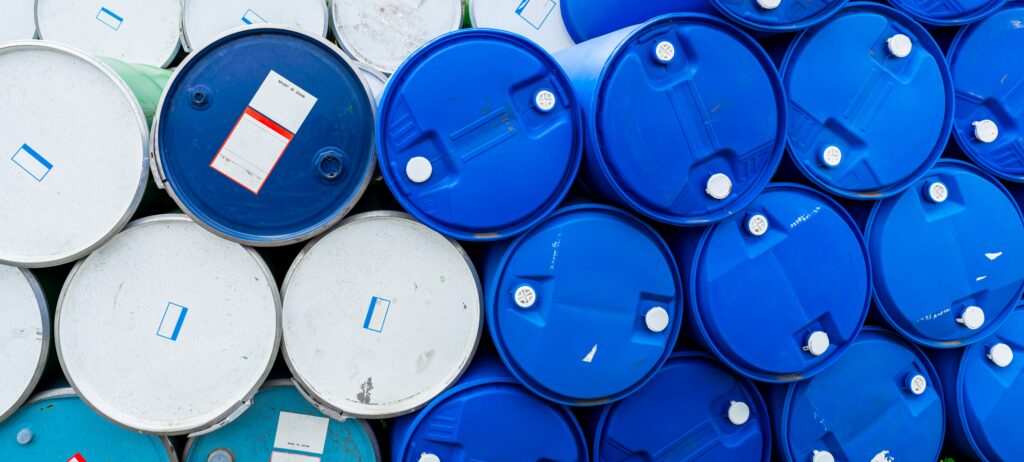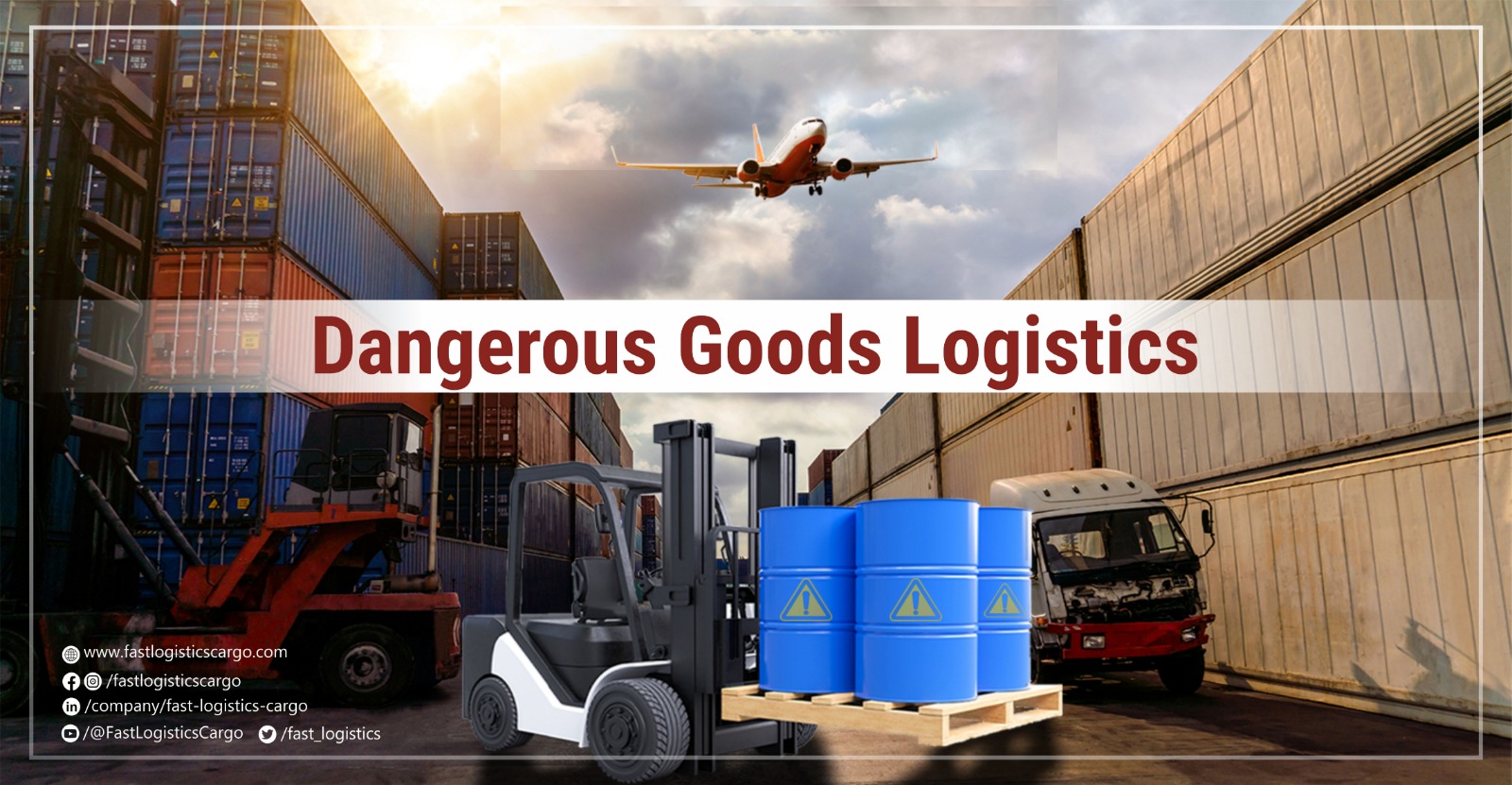Dangerous Goods Logistics
Dangerous goods logistics is the transportation of hazardous substances by Air, Sea, or Road thorough extreme precautionary measures. Dangerous goods, also abbreviated as DG, hazardous goods, or hazardous materials (HAZMAT) are any substances or materials capable of posing an unreasonable risk to health, safety, environment, and property when transported. Dangerous goods transportation through any route requires a lot of precautionary and safety measures as massive quantities of DG are transported each day through various modes.
Rules and Regulations
IATA works closely with local governments and ICAO in the development of regulations. This way the rules and guidelines on transportation of dangerous goods and transportation of hazardous substances are effective and operational practical. The AITA dangerous goods regulation or AITA DG’s (DGR) manual is the global reference for shipping dangerous goods through airfreight. It recognizes that significant changes take place year to year, and the updates information necessarily to stay in touch with safety protocols, International Maritime Dangerous Goods Code or the IMDG sets out in-detail requirements applicable to each individual substances through maritime trade and amendments are made every two years.
Proper training for all persons in the dangerous goods supply chain is vital to ensure that the hazards posed by dangerous goods are understood and everyone involved is competent to dangerous goods handling for which they are responsible. While some functions require basic knowledge of the dangerous goods regulations, other functions need detailed information regarding the hazardous material regulations to carry out their duties. In any case, regulations and adequate training are required for each job function. This is a necessity for shippers and packers, freight forwarders, operators, and ground handling agents as well as security screeners.

Types of Dangerous Goods Logistics
- Explosive Materials logistics
- Gaseous Materials logistics
- Inflammable Liquids logistics
- Inflammable Solids logistics
- Materials containing peroxides logistics
- Highly toxic substances and infective logistics
- Radioactive substances and material logistics
- Erosive Material logistics
- Dangerous material logistics and substances miscellaneous in nature
Documents Required to Ship Dangerous Goods
Each hazardous material shipment must be accompanied by a Shipper’s Declaration for Dangerous Goods and Air Waybill document. The following information is required on the document:
- Shipper name
- Consignee
- Air Waybill Number
- Page of pages numbers
- Aircraft Limitations
- Airport Departure
- Airport Designation
- Shipment Type
- Nature and Quantity of Dangerous Goods
- Number and Type of Packaging
- Packing Instructions
- Authorizations
- Additional Handling Information
- Certification Statement
- Name of Signatory
Dangerous Goods – Air Transport
Some goods possess danger to the aircraft and the people on board. These materials may not be harmful on land but can jeopardize safety in mid-air in certain atmospheric conditions and are restricted in air transport. IATA leads industry efforts to ensure the safe transport of dangerous goods by air. IATA works closely with local governments and ICAO in the development of regulations. IATA Dangerous Goods Regulations (DGR) manual is the global reference for shipping dangerous goods by air and the only standard recognized by airlines.
Fast Logistics have a team of expert specialist in transporting dangerous goods. We have trained professionals who handle dangerous goods in all safety standards, ensuring that they arrive completely intact and possess no risk to the craft, environment, or people.
Dangerous Goods – Ocean Transport
Shipping dangerous goods internationally through maritime transport involves a series of approvals for ship and containers adhering to risks factors of dangerous goods transportation through sea.
The International Maritime organization is responsible for classification of dangerous goods, which is a well-known in the maritime transport sector as IMO goods. The maritime transport of dangerous goods is governed by the IMDG (International Maritime Dangerous Goods), which provides dangerous goods rules and regulations while dealing with packaging, labelling and on-board storage along with setting protocols for dealing with potential emergencies and accidents.
Fast Logistics capacitates dangerous goods with expert handling and attends to all the protocols set by the IMDG. Our team also manages safety standards at ports and aids in clearance with the authorities.
Dangerous Goods – Overland Transport
Most countries have strict rail and road transportation regulations. The ADR (Agreement on Dangerous Goods) controls the traffic for road transportation and RID regulated the international carriage of dangerous goods by rail. The package and storage of dangerous goods requires specialized containers and railway wagons which guarantee the safety of environment and passengers. Fast Logistics meets the transportation needs with highest reliability standards on packaging, labeling and safety when carrying the cargo. We hire qualified team members to optimize the supply chain and reduce the risks of transport.
Dangerous Goods Logistics Statistics
Dangerous goods make up to around 10% of all containerized shipment worldwide.
The global hazardous goods logistics market was valued at $200 billion in 2021, and is projected to reach $382.9 billion by 2031, growing at a CAGR of 7% from 2022 to 2031. Hazardous goods cover a significant portion of global freight, which includes widely used commodity and products such as batteries, chemicals, bio-hazardous, oil logistics and gasoline. Asia-Pacific would exhibit the highest CAGR of 8.5% during forecast period. Annual transport of dangerous goods in China is about 1.6 billion tons, ranking second in the world. The main modes of transport include waterways, roads, railways, airlines, and pipelines.
FAQ’s
The Cost of dangerous goods logistics varies from the material transported and the routes taken in accordance to the distance. Also, intercontinental, and inland prices vary. The mode of transport used, i.e., Road, rail, airfreight, ocean freight is also a factor taken into consideration for determining the pricing.
These classes of dangerous goods cannot be kept together –
Flammable gases and flammable liquids are classified as incompatible.
Non – flammable non toxic gases and flammable liquids are also classified as incompatible.
Flammable solids and flammable liquids are incompatible.
Dangerous goods and flammable liquids are incompatible.
Oxidizing agents and flammable liquids have a potential to react dangerously.
Organic peroxides and flammable liquids will react dangerously.
Toxic substances and flammable liquids are incompatible.
Corrosive substances and flammable liquids are also incompatible. Dangerous goods react with multitude of dangerous substances. It is vital that you apply the rules of chemical segregation while your storing.









